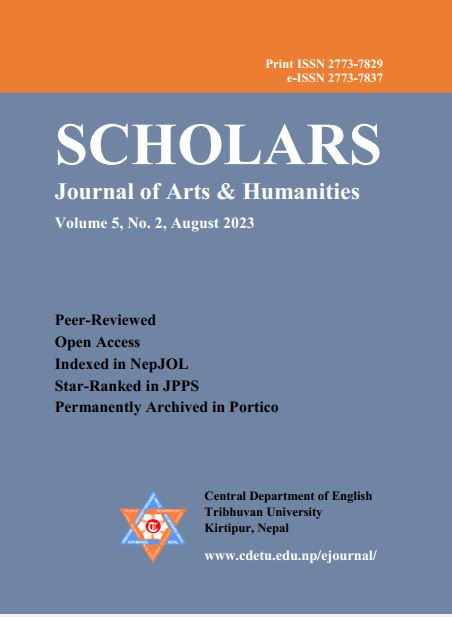The Historical Trajectory and the Politics of Lakhan Thapa’s Body: Redrawing from Nepali Experiences
DOI:
https://doi.org/10.3126/sjah.v5i2.57495Keywords:
Body, historical trajectory, antipathy, empathy, apotheosisAbstract
This paper explores Lakhan Thapa’s body in the historical trajectory, especially dealing with antipathy, empathy and apotheosis in the light of the New-historicist perspective. Lakhan Thapa, a military rebellion and the first martyr of Nepal, was executed by the Rana regime in 1877. It took 122 years to recognize his body as “a martyr,” which was declared by the multiparty democratic government in 1999. In the past, the regime created by the Ranas and Panchayats accentuated Lakhan Thapa in different positions, capturing variegated emotional responses from the rulers and the public. Against this backdrop, the paper argues that Lakhan Thapa’s body is a site of antipathy, empathy and apotheosis. For instance, when his body resisted the ruler Jung Bahadur Rana, it was dominantly occupied by antipathy, creating a threat against the ruler. As the democratic movement took place in the country in 1990, empathetic temperaments were discharged from the public, reckoning Lakhan Thapa’s body as a site of emancipation and celebration. Therefore, Lakhan Thapa’s body became ubiquitous and omnipresent when the democratically elected federal republican government of Nepal declared Lakhan Thapa “the first martyr of Nepal” in 2015. To address this issue, the study employs Michel Foucault’s notion of the ‘disciplined body’ and Stephen Greenblatt’s definition of ‘resonance and wonder’ for analysis. The study also exposes Lakhan Thapa’s body as a site of contestation and celebration, which is largely shaped by the political transition. The body is not a static and neutral form of agency with apolitical materiality but rather a fluid and transitory state of representation, profoundly rooted in the nexus of power and politics.
Downloads
Downloads
Published
How to Cite
Issue
Section
License

This work is licensed under a Creative Commons Attribution 4.0 International License.
© Central Department of English, Tribhuvan University and Authors




